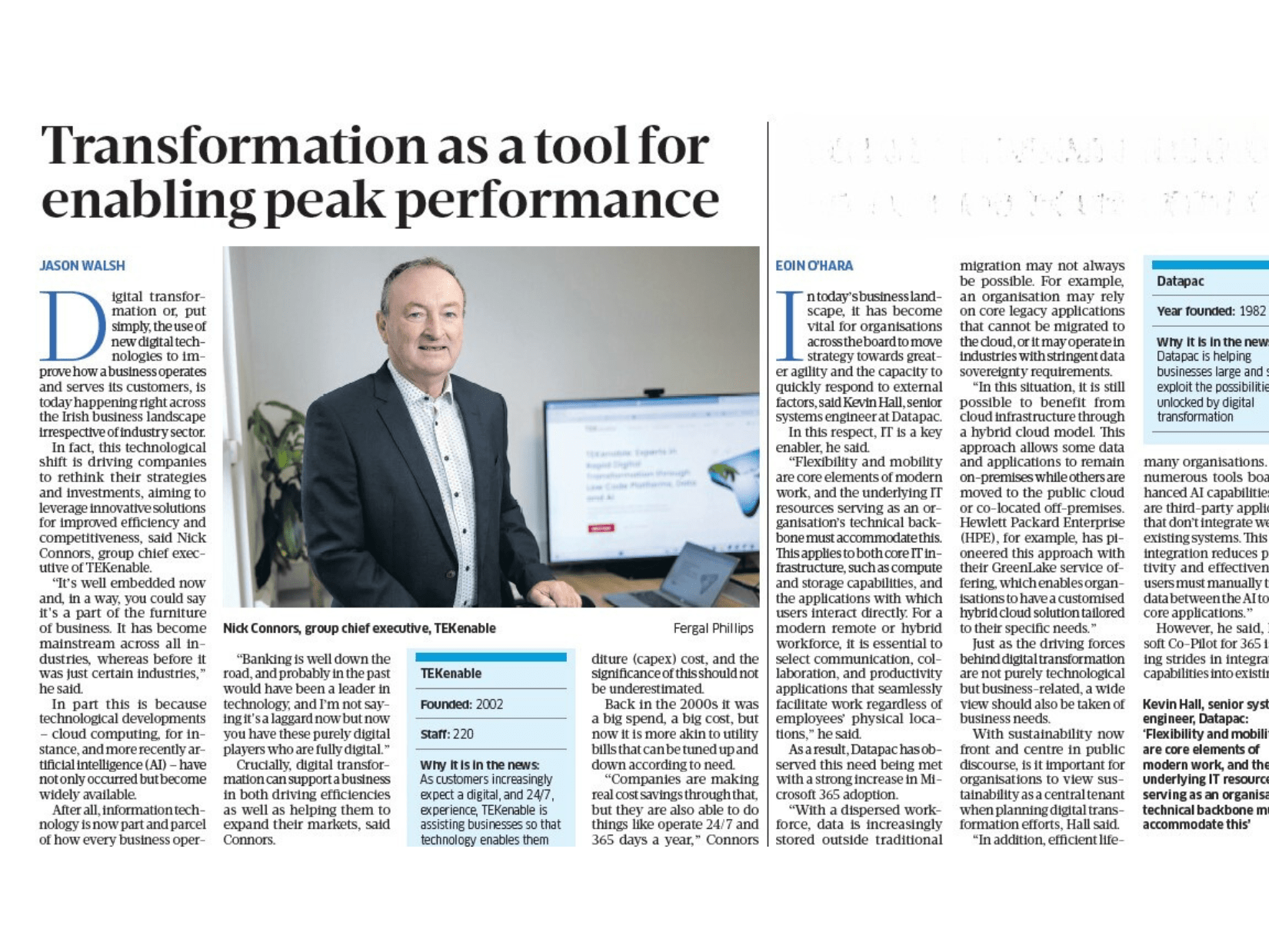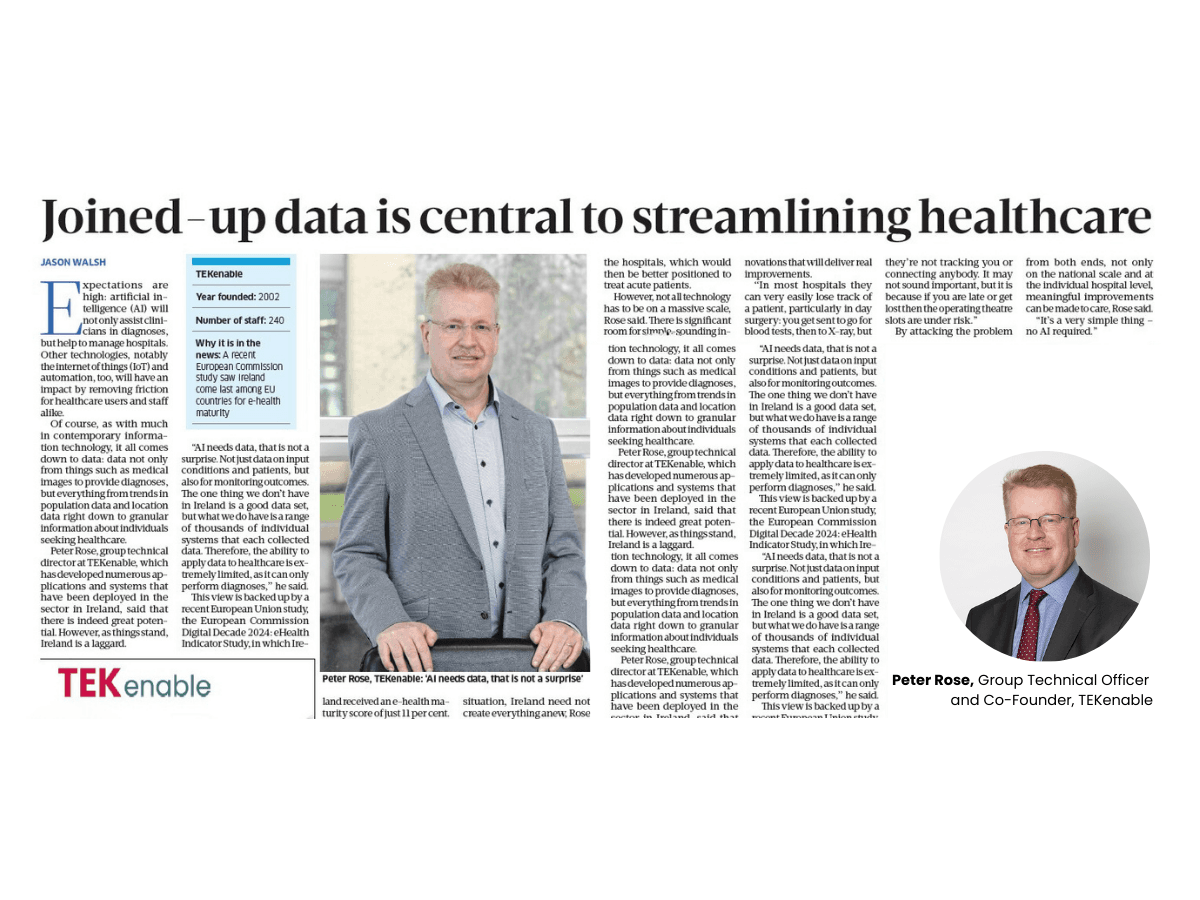Recent years have seen what technology can do for businesses – and how they invest in it – transformed beyond recognition, but the road to transformation can be planned and roadmapped.
Nick Connors, Group Chief Executive, TEKenable
Digital transformation or, put simply, the use of new digital technologies to improve how a business operates and serves its customers, is today happening right across the Irish business landscape irrespective of industry sector.
In fact, this technological shift is driving companies to rethink their strategies and investments, aiming to leverage innovative solutions for improved efficiency and competitiveness, said Nick Connors, group chief executive of TEKenable.
“It’s well embedded now and, in a way, you could say it’s a part of the furniture of business. It has become mainstream across all industries, whereas before it was just certain industries,” he said.
In part this is because technological developments – cloud computing, for instance, and more recently artificial intelligence (AI) – have not only occurred but become widely available.
After all, information technology is now part and parcel of how every business operates so, as a result, moving forward means keeping up to date with technological change.
“There is no company that does not have some dependence on technology,” Connors said.
However, they also now have options. “Digital transformation means that they now have a reason to move, and a way to move, to the cloud, which gives a real advantage in terms of cost savings, improved efficiency and improving sales,” he said.
The maturity of any organisation’s digital transformation strategy will depend on a number of factors, including industry sector, organisation size and even investment in legacy technology.
“Banking is well down the road, and probably in the past would have been a leader in technology, and I’m not saying it’s a laggard now but now you have these purely digital players who are fully digital.”
Crucially, digital transformation can support a business in both driving efficiencies as well as helping them to expand their markets, said Connors.
“Does technology do it all? No, it doesn’t, but it certainly helps and supplements. There is a carrot-and-stick element too, and the stick would be the exposure to criminals and hacks. The carrot would be the ability to be more efficient,” he said.
“One of the big ones is using technology where, previously, you would have had manual processes. Interestingly, what we find is that those people doing mundane tasks, such as data input, go to work elsewhere in the organisation on higher-value tasks,” he said.
If you have a partner that has done this multiple times, and has good references, you can be confident in the process.
Larger businesses often find the transformation process to be lengthier, particularly if they have a lot of legacy systems. However, unlike the IT projects of the past, digital transformation is intended to be incremental in nature, resulting in not only lower costs but also significant de-risking.
“Traditionally, you’d have looked at a project or programme of work, with significant investment and eventually, a ‘big bang’ launch or switchover, and then you live with it for the next five or so years. Those days have gone. Now it’s a journey and you break the journey down, planning and mapping it down,” he said.
Indeed, with cloud, technology now is an operating expenditure (opex) cost as opposed to a capital expenditure (capex) cost, and the significance of this should not be underestimated.
Back in the 2000s it was a big spend, a big cost, but now it is more akin to utility bills that can be tuned up and down according to need.
“Companies are making real cost savings through that, but they are also able to do things like operate 24/7 and 365 days a year,” Connors said.
However, despite the shift, to be effective the process must be done right, starting with a business case and developing a roadmap.
“One of the factors we see is that a transformation has to have complete buy-in from the owners, senior management and middle management, to back it. If you leave it to one individual or group without that backing from leadership, we can almost 100 per cent say it will fail.”
TEKenable also puts stock in experience, including putting new clients in touch with previous clients. “If you have a partner that has done this multiple times and has references, you can be confident in the process,” he said.
The above text was reproduced from the interview published in BusinessPost on May 10th, 2024.





